Series for Polish Tourism Organisation
The images you find here promote Poland at the largest international tourism fairs, e.g. World Travel Market in London or ITB in Berlin. They are displayed on stands, and also a series of gadgets and gifts for the diplomatic service based on them was produced . Watercolors present the essence of the character of selected Polish cities and the spirit accompanying their development.
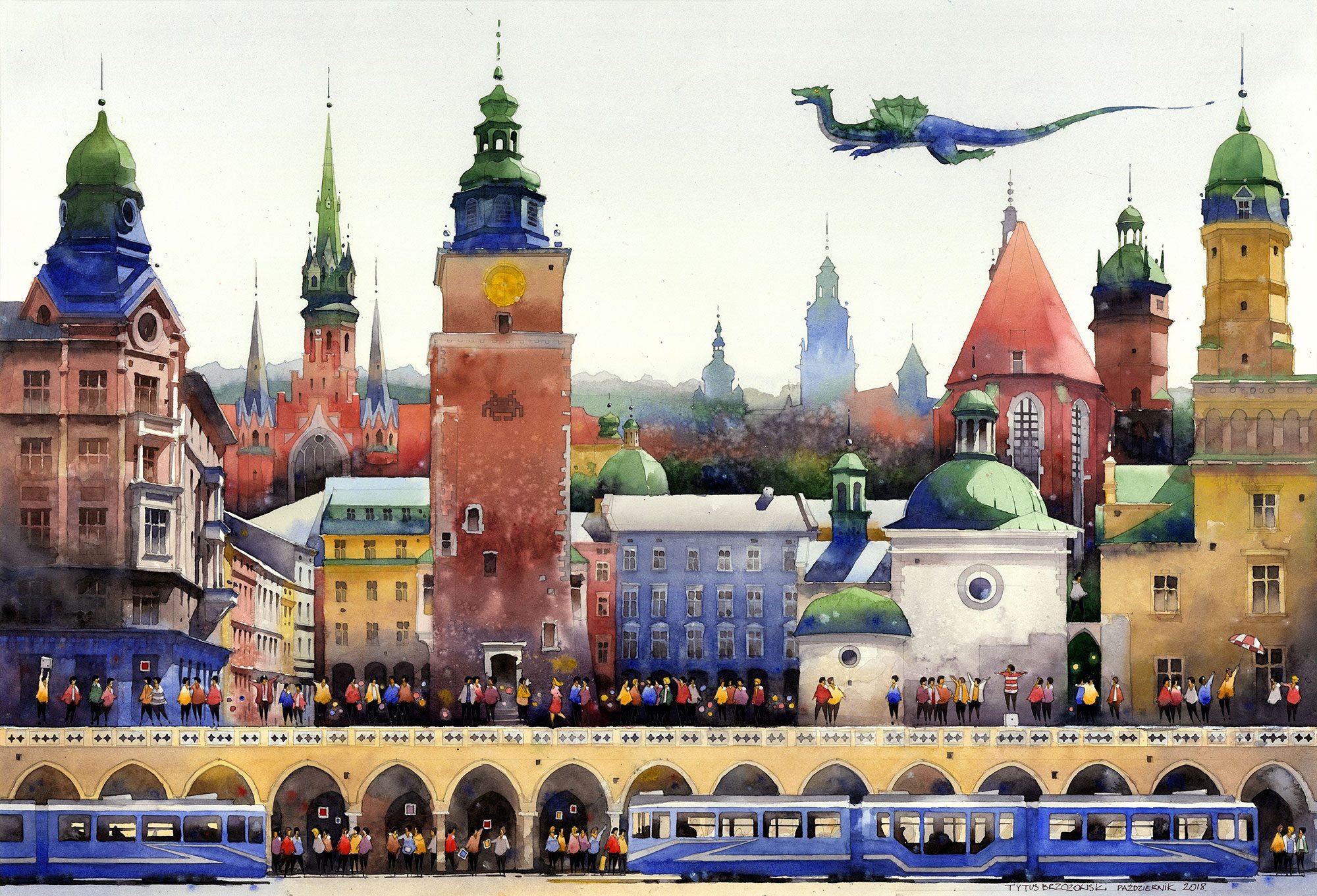
Cracow2018, 57x82 cm
The watercolor is a collage of characteristic buildings of the touristic Krakow. Bustling Cloth Hall forms the base for this scene with local blue trams. The Old Town is completed by the town hall tower and the church of St. Wojciech. Hazy Wawel Hill appears in the distance. Kazimierz is represented by the town hall and the Gothic church of the Corpus Christi, Podgórze – by the neo-Gothic tower of the church of St. Joseph. Everything is tied up by a distant perspective of the Crown of the Tatra. In the upper part of the picture we can see the most famous inhabitant of Krakow slowly gliding above the city.
The watercolor is a collage of characteristic buildings of the touristic Krakow.

Lodz2019, 55x81 cm
The history of Łódź is associated with something intangible and extremely important – a dream. It is a promised land where anything could have happened and which developed with great energy. That is why the most spectacular townhouses can levitate above the city. In the lower part of the frame, there are characteristic buildings: factories, churches, Kosciuszko monument, Izrael Poznanski's palace and an extraordinary gate to his factory, which leads to Piotrkowska Street in the picture.
The history of Łódź is associated with something intangible, with a dream.
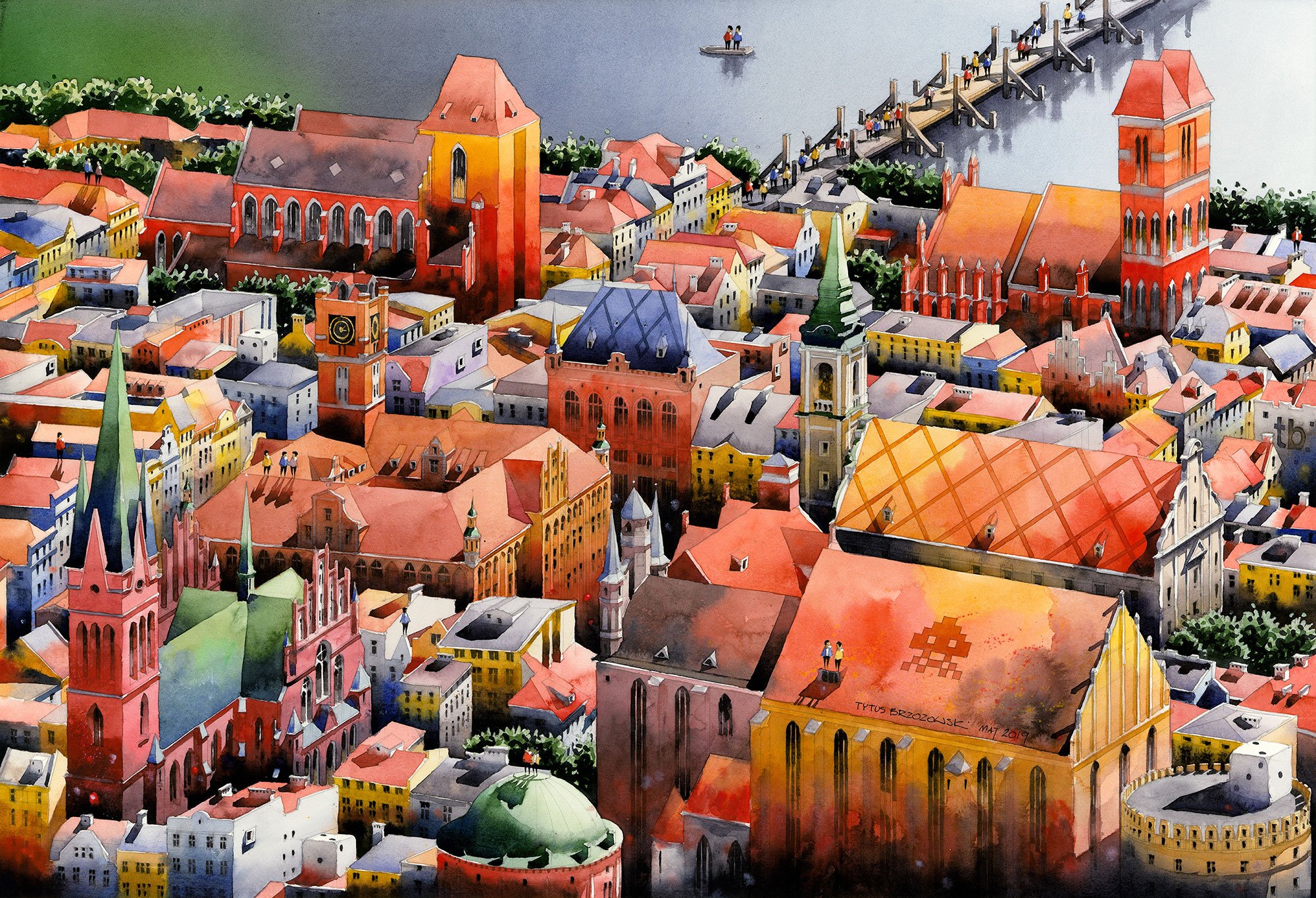
Torun2019, 55x81 cm
Toruń is a city of powerful Gothic edifices located in a compact manner in a small area. The frame includes a market square with all the most important dominants: the town hall, the Artus Court, numerous churches from close and distant surroundings, the home of Copernicus. An important component of the city is the Vistula, which appears in the upper part of the frame. A former wooden bridge built in 1500 leads through the river. It was the second crossing over the Vistula, the first bridge was built in Krakow.
Toruń is a city of powerful Gothic edifices.
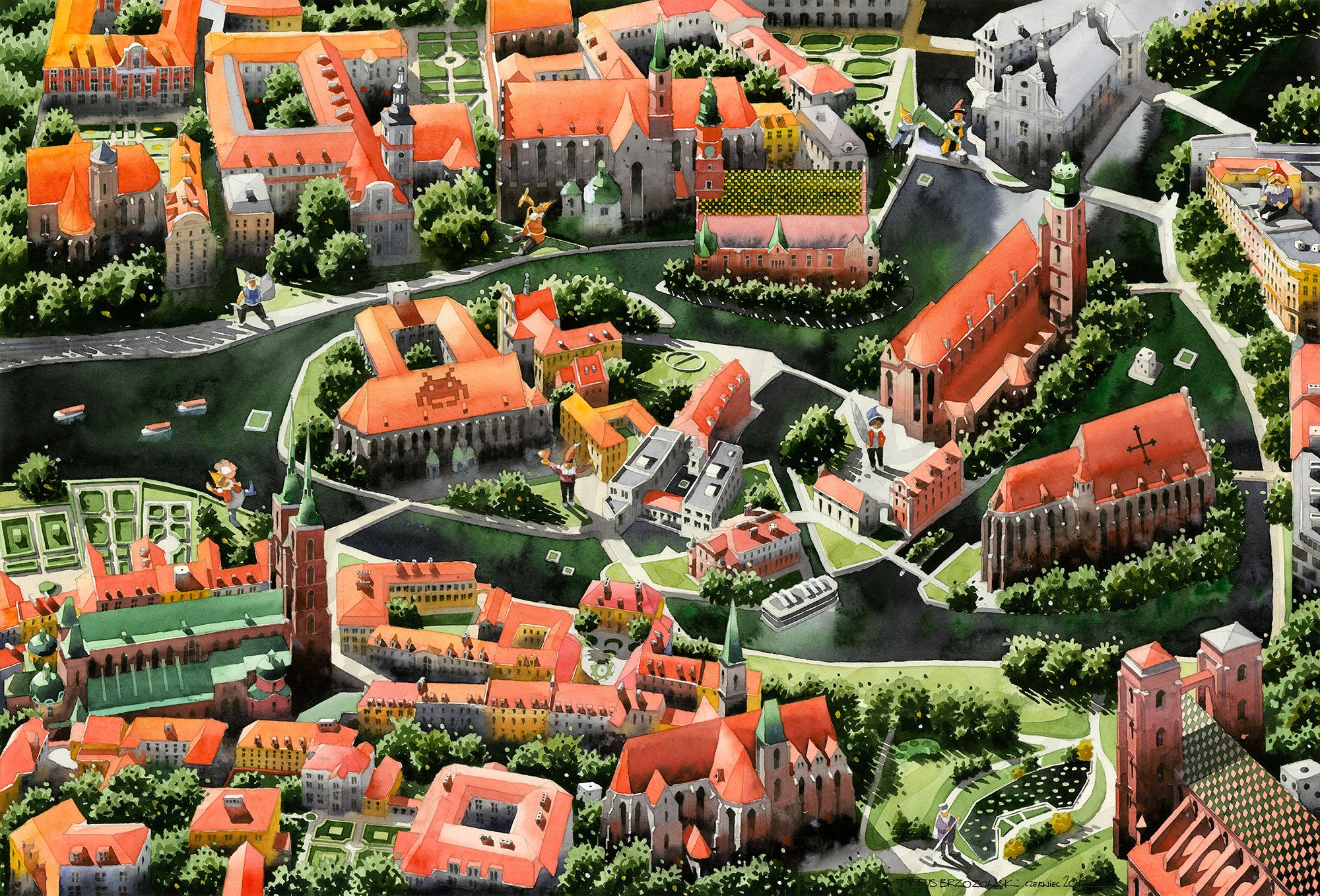
Wroclaw2019, 55x81 cm
The frame emphasizes the extraordinary value of the city, which is Odra and the life around it. Wroclaw islands connected by countless bridges have become the new seat of the most important local dominants - powerful Gothic churches and cathedrals. The scene also includes numerous gardens and green areas complementing the impression of an extremely friendly city. Wroclaw dwarfs can be found between the buildings.
The frame emphasizes the extraordinary value of the city, which is Odra and the life around it.
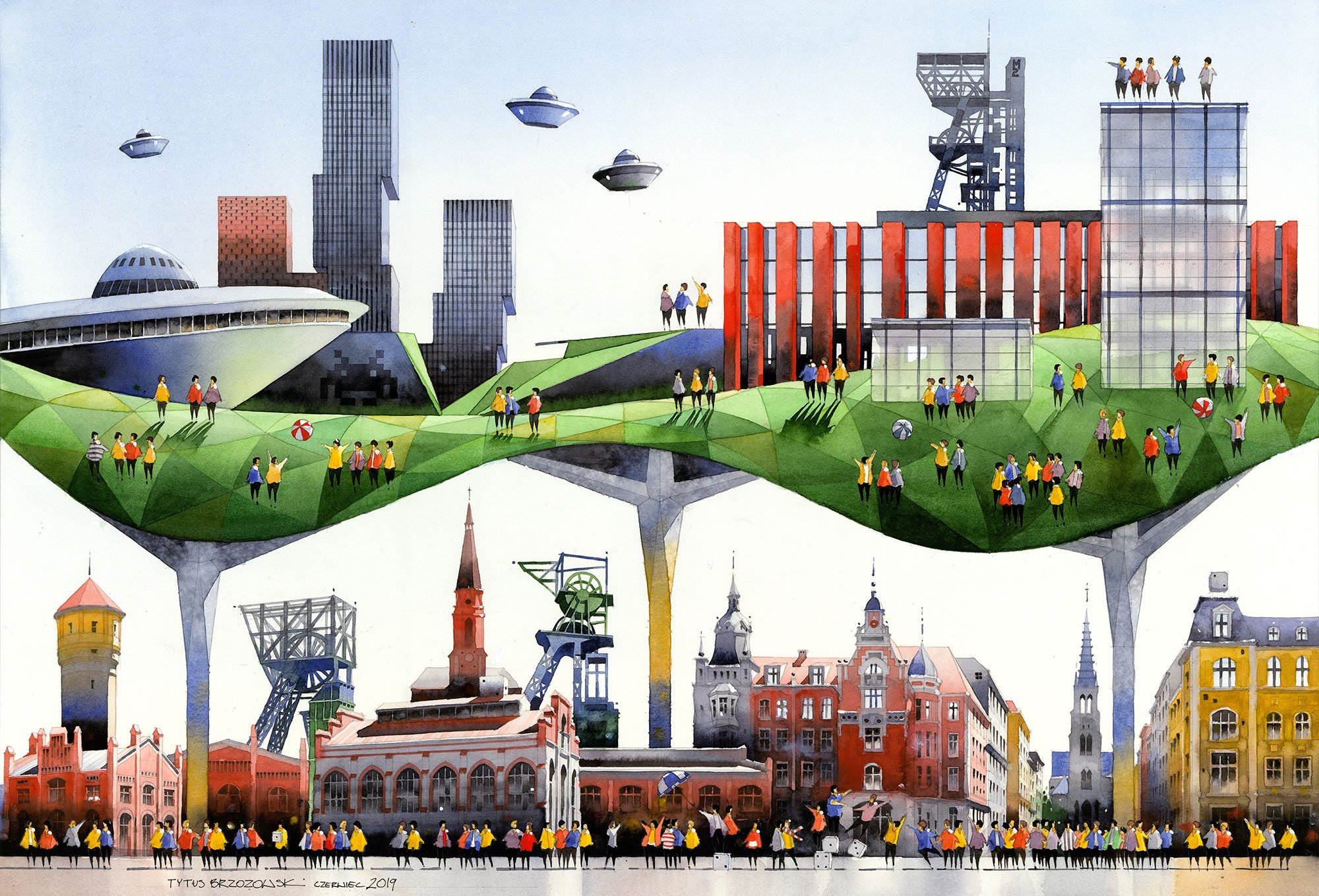
Katowice2019, 55x81 cm
The painting combines the nineteenth-century beauty of the city with its modern, green aspirations. It depicts old-time Katowice with elegant townhouses, Mariacka street, neo-Gothic churches, shaft towers and infrastructure of the mines. Above there is a green meadow raised on the famous goblets of the Katowice railway station. There we can see the Culture Zone with contemporary architectural implementations that are key for this area, such as the Silesian Museum, Polish National Radio Symphony Orchestra building, MCK International Congress Centre.
The painting combines the nineteenth-century beauty of the city with its modern, green aspirations.
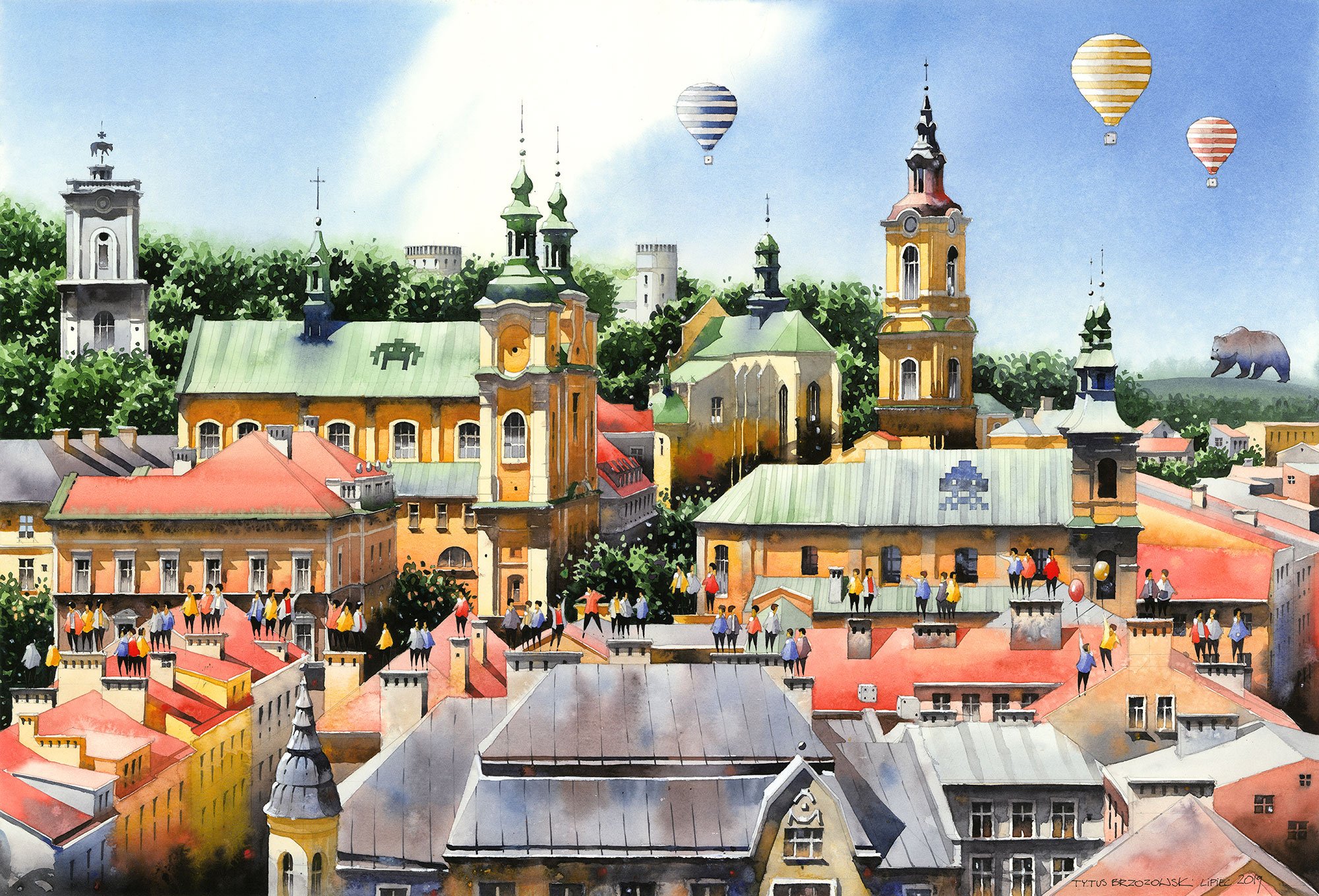
Przemysl2019, 55x81 cm
A characteristic capture of a beautiful city with a number of unusual dominants. The perspective is closed by the lush greenery of the hill topped by the Kazimierz castle. In the distance we can see the city symbol – a promenading bear, that is also a part of a crest above the tower of the Bells and Pipes Museum.
A characteristic capture of a beautiful city with a number of unusual dominants.
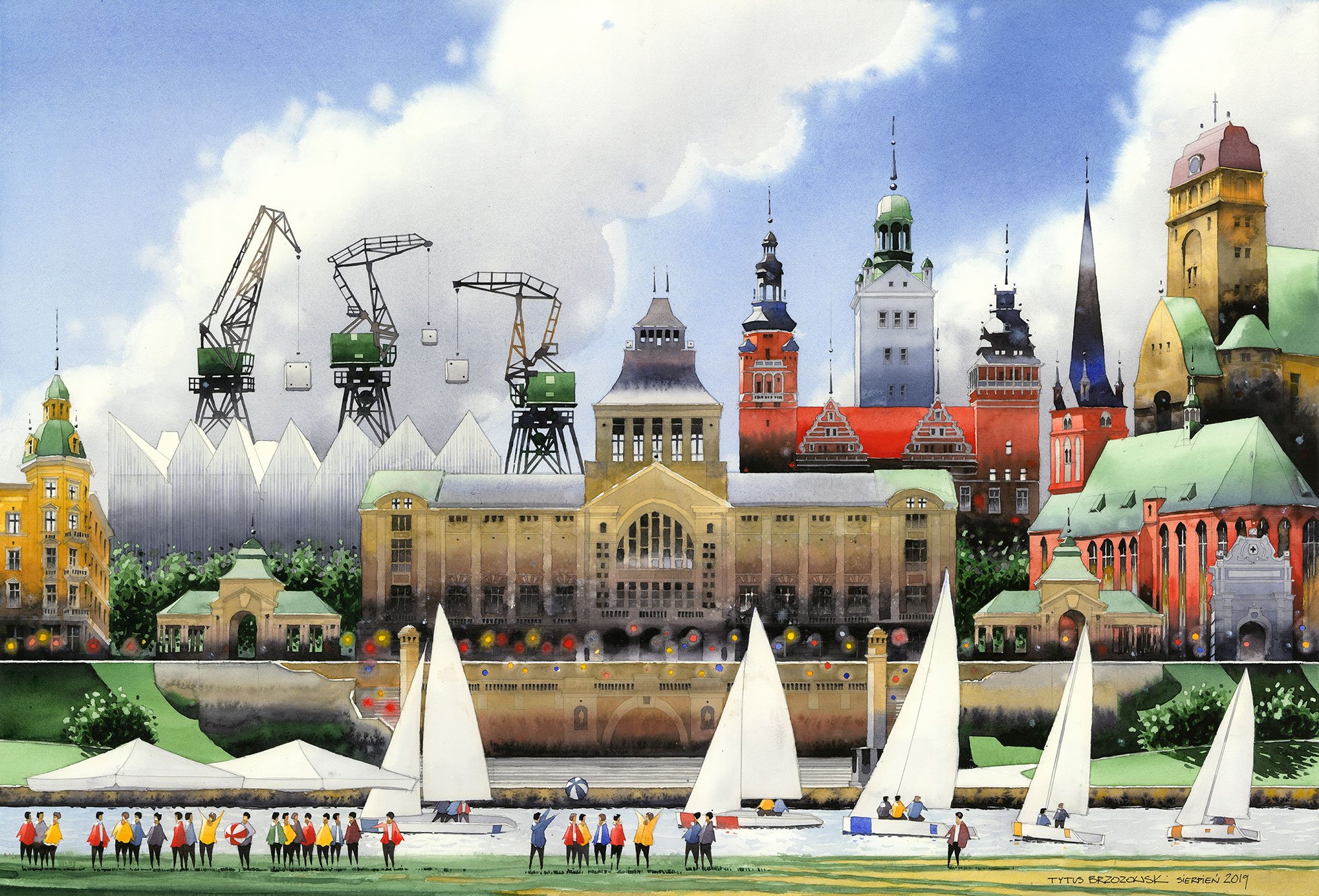
Stettin2019, 55x81 cm
The main element of the frame is the great Chrobry Embankment with the centrally located National Museum. It is accompanied by characteristic buildings: a concert hall which received a prestigious Mies van der Rohe award, tower of the Pomeranian Dukes' castle, or Archcathedral of St. Jacob. Above the city, we can see a symbol of the port character of Szczecin, the historic „crane-o-saurs”. In the foreground you can see the city beach and cyclically organized boat races.
The main element of the frame is the great Chrobry Embankment.
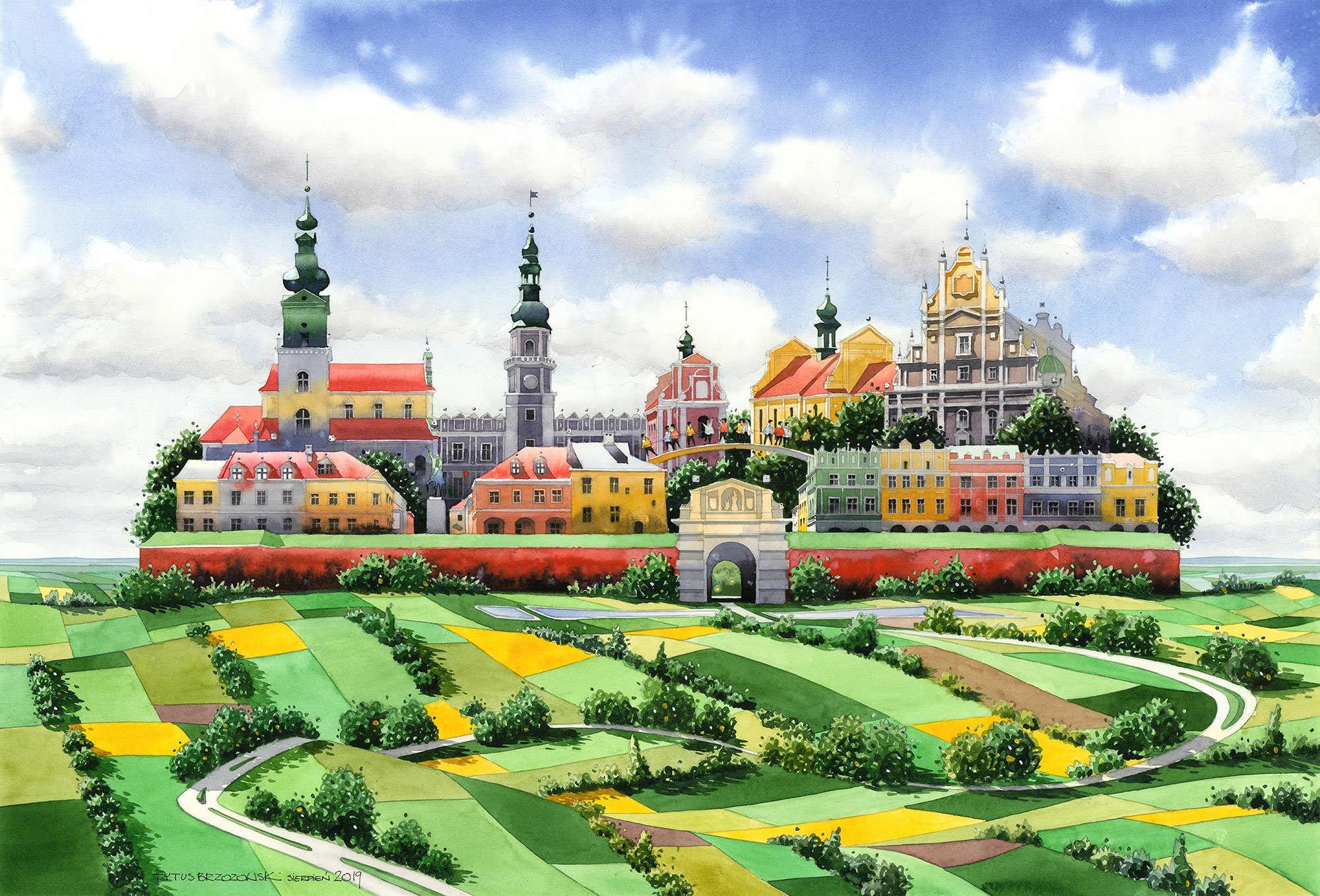
Zamosc2019, 55x81 cm
Located among the hills of Roztocze, the famous perfect city, the pearl of Polish architecture and urban planning. An example of exemplary cooperation between the architect Bernardo Morando and the investor Jan Zamoyski. Behind the city walls, there are typical townhouses, the famous town hall tower, churches, including the Franciscans church being restored to its former form. One of the city's footbridges is above the Lviv Gate.
Located among the hills of Roztocze, the famous perfect city, the pearl of Polish architecture.
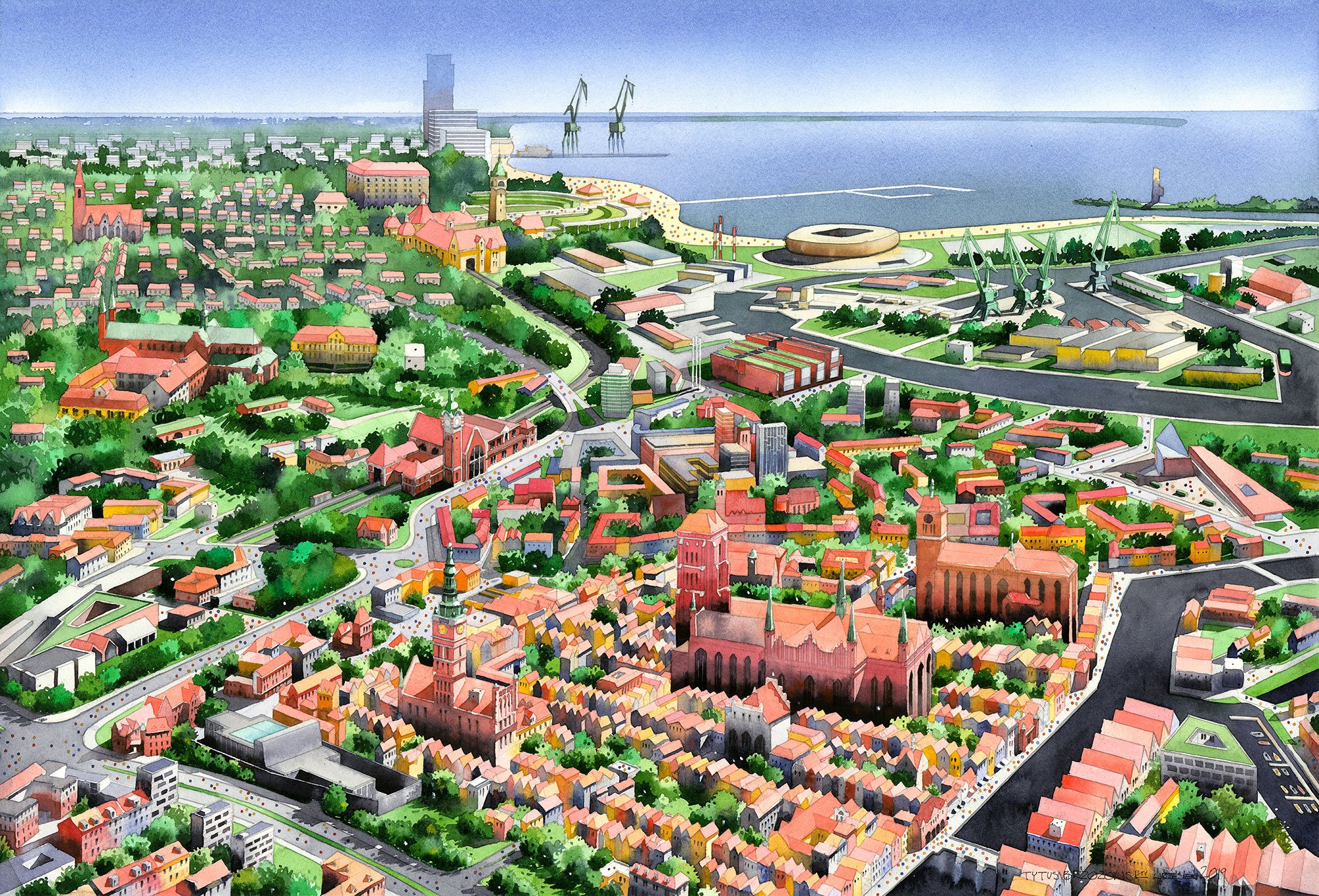
Tricity2019, 55x81 cm
Collage of historical and modern buildings of the Tri-City. Port cranes grow out of the regular buildings of Gdynia. In Sopot, Monciak leads from the lighthouse and the pier to the neo-Gothic Church of St. George. Shipyard fragments of Gdansk are accompanied by a stadium - the famous "Amber". The perspective is complemented by the Monument to the Shipyard Workers Fallen in 1970, the Main Railway Station, Town Hall, Artus Court, St. Mary's Basilica, Church of St. John, Oliwa Cathedral, a monument on Westerplatte, Solidarity Center, Museum of the Second World War, Shakespeare Theater and Granary Island.
Collage of historical and modern buildings of the Tri-City.